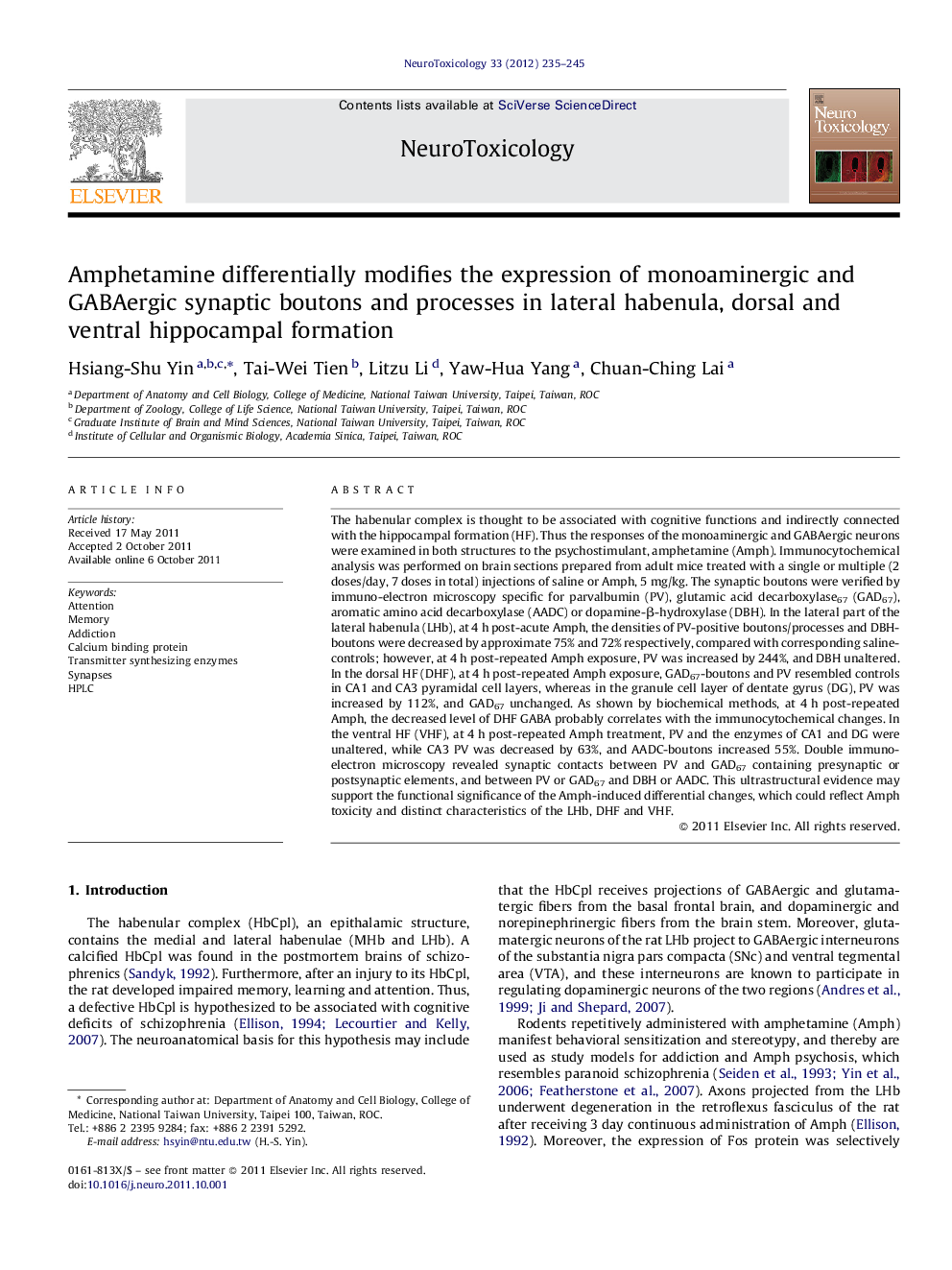| Article ID | Journal | Published Year | Pages | File Type |
|---|---|---|---|---|
| 2590352 | NeuroToxicology | 2012 | 11 Pages |
The habenular complex is thought to be associated with cognitive functions and indirectly connected with the hippocampal formation (HF). Thus the responses of the monoaminergic and GABAergic neurons were examined in both structures to the psychostimulant, amphetamine (Amph). Immunocytochemical analysis was performed on brain sections prepared from adult mice treated with a single or multiple (2 doses/day, 7 doses in total) injections of saline or Amph, 5 mg/kg. The synaptic boutons were verified by immuno-electron microscopy specific for parvalbumin (PV), glutamic acid decarboxylase67 (GAD67), aromatic amino acid decarboxylase (AADC) or dopamine-β-hydroxylase (DBH). In the lateral part of the lateral habenula (LHb), at 4 h post-acute Amph, the densities of PV-positive boutons/processes and DBH-boutons were decreased by approximate 75% and 72% respectively, compared with corresponding saline-controls; however, at 4 h post-repeated Amph exposure, PV was increased by 244%, and DBH unaltered. In the dorsal HF (DHF), at 4 h post-repeated Amph exposure, GAD67-boutons and PV resembled controls in CA1 and CA3 pyramidal cell layers, whereas in the granule cell layer of dentate gyrus (DG), PV was increased by 112%, and GAD67 unchanged. As shown by biochemical methods, at 4 h post-repeated Amph, the decreased level of DHF GABA probably correlates with the immunocytochemical changes. In the ventral HF (VHF), at 4 h post-repeated Amph treatment, PV and the enzymes of CA1 and DG were unaltered, while CA3 PV was decreased by 63%, and AADC-boutons increased 55%. Double immuno-electron microscopy revealed synaptic contacts between PV and GAD67 containing presynaptic or postsynaptic elements, and between PV or GAD67 and DBH or AADC. This ultrastructural evidence may support the functional significance of the Amph-induced differential changes, which could reflect Amph toxicity and distinct characteristics of the LHb, DHF and VHF.
► The repeated amphetamine increased habenular level of parvalbumin boutons and fibers. ► The amphetamine increased dorsal, not ventral, dentate gyrus parvalbumin expression. ► The drug decreased ventral, not dorsal, CA3 expression of parvalbumin. ► AADC was up-regulated only in ventral CA3 by the repeated amphetamine. ► Immuno-EM supported synaptic contacts between parvalbumin and AADC or DBH boutons.
